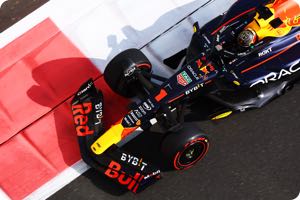JANUARY 4, 2024
RB20 may have failed first crash test
Red Bull’s preparation for the 2024 season are rumored to have suffered a setback just before the winter shutdown, with sources close to the Austrian team suggesting the first monocoque of the new RB20 failed the mandatory frontal crash test. Like all UK-based teams, Red Bull conducts the crash tests of its cars in Cranfield, but according to those sources, the team will now need to bring the second chassis into that facility, with at least one extra layer of carbon fibre added to the frontal structure, in order to pass thus crash test and get the necessary homologation.
The Cranfield Impact Centre is one of the two FIA approved Formula 1 crash test facility, the other one – used by Ferrari, AlphaTauri and Sauber – being based in Milan, Italy. It’s there that Red Bull, Mercedes, McLaren, Aston Martin, Alpine, Williams and Haas conduct their tests and a couple of these teams actually managed to get their crash tests done before the inaugural winter shutdown.
In the case Red Bull has actually failed that frontal crash test, as rumored, the fact the Milton Keynes factory – like all nine other Formula 1 team factories – was in shutdown from December 24th until January 2nd meant that the modifications needed for the second monocoque to withstand the front impact crash test could only be started on Tuesday, putting the entire program a bit behind schedule.
With Adrian Newey being known for wanting all parts of his cars to be as light as possible – as weight saving equals performance – this is not the first nor the second time Red Bull has failed a crash test but with still seven weeks to go before the start of testing in Bahrain, there’s plenty of time for the team to catch up, the biggest delays being on static testing in the factory, using the seven-post test rig, as only after monocoque number 2 passes the crash tests in Cranfield will those tests go ahead.
Red Bull entered 2022 with a car that was seriously overweight and the biggest developments made during that season were more on weight saving than in aerodynamic upgrades, with the dominant RB19 being much closer to the minimum weight right from the start of the 2023 season and reaching it with the introduction of the first upgrade, in the Spanish Grand Prix.
Now the team seems to have gone a bit too far in its quest for reducing the basic weight of the RB20, so once a new layer of carbon skin is added to the front of the car, the total weight of the car will go up by a couple of kilos, leaving some margin for Newey and his team to work on a “diet cure” that will bring the car bellow the minimum weight, to allow the team to work with ballast as a means to improve the set-up of Verstappen and Pérez’s new car.
